People often think they know the strongest dogs simply by naming the most popular ones. Yet, many of the fiercest protectors are so rare that even seasoned dog enthusiasts have never encountered them.
Popularity and strength do not always go hand in hand. The rare breeds that stand guard in remote villages, mountain ranges, or farmlands are forged by necessity. They carry within them a fierceness that does not need display or recognition.
These dogs live not for applause but for purpose, and their rarity only makes them more extraordinary. Few understand the depth of courage these breeds carry, but their stories deserve to be told.
This article presents the rarest yet fiercest dog breeds, a glimpse into a canine world that most people have never seen.
Rarest Yet Fiercest Dog Breeds
1. Fila Brasileiro

Did You Know: In Brazil, there’s a saying: “Faithful as a Fila,” reflecting the breed’s unmatched loyalty to its family.
The Fila Brasileiro stands out with loose skin, a heavy bone structure, and a topline that slopes toward the tail. Its muscular body and deep chest give it the kind of power needed to restrain large intruders. These physical traits have kept the breed recognized among the rarest dog breeds worldwide.
Natural Protector
Bred in Brazil as a working guardian, the Fila is known for absolute devotion to its family. Its temperament carries a strong protective drive, making it wary of strangers but affectionate at home. For anyone considering this breed, being an experienced dog owner is essential.
Living Requirements
This is not a city companion — the Fila thrives where open space and responsibility match its instincts. It performs best in rural properties where it can roam and protect. Some owners emphasize the importance of structured training from an early stage.
Strength and Endurance
The breed combines stamina with raw strength, qualities often seen in athletic dogs. Its ability to patrol for long hours without tiring is part of its heritage as a farm and estate protector. Few other breeds combine loyalty and physical presence in quite the same way.
2. Tosa Inu
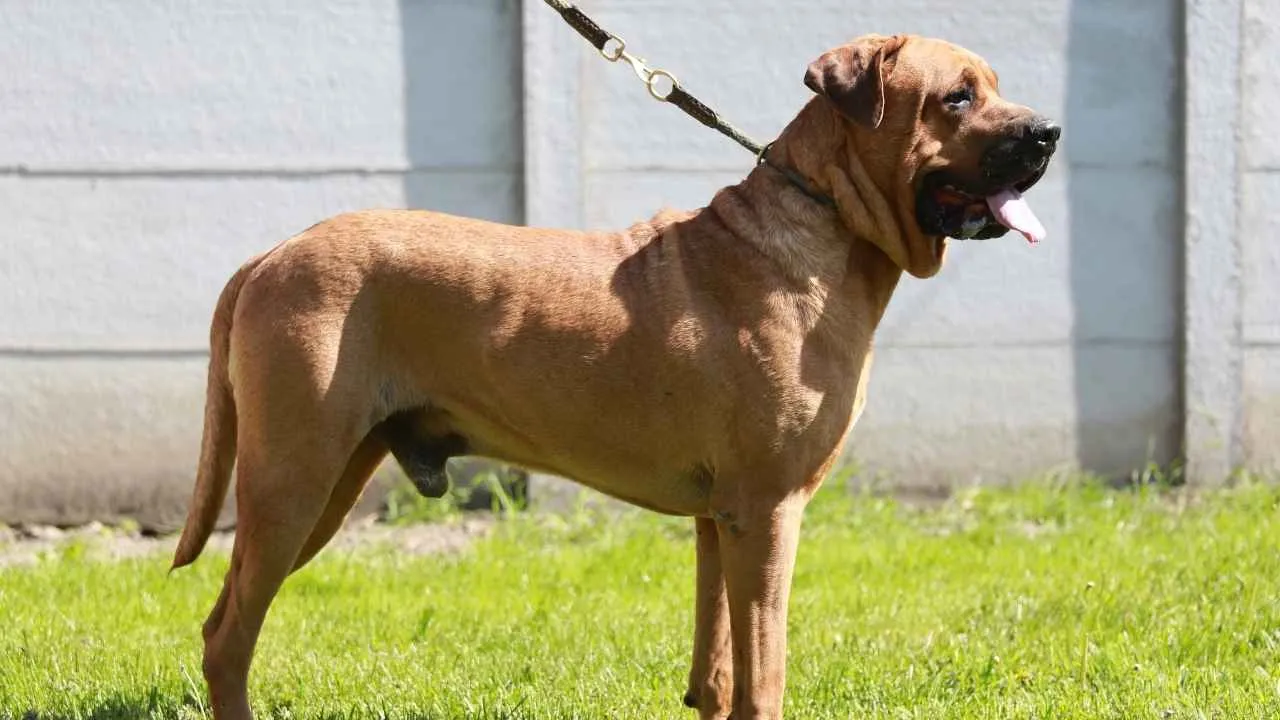
The Tosa Inu is a giant mastiff-type dog that can weigh close to 200 pounds, with a frame built for raw strength. This power is balanced by a steady temperament indoors, where they remain calm and composed. Their sheer presence alone is often enough to deter unwelcome visitors.
Guarding Instincts
Historically bred for fighting in Japan, the Tosa Inu developed fearlessness and endurance that remain evident today. They are rarely seen outside their homeland, often listed among the world’s rarest dog breeds. As guardians, they combine patience with a sudden ability to confront real threats.
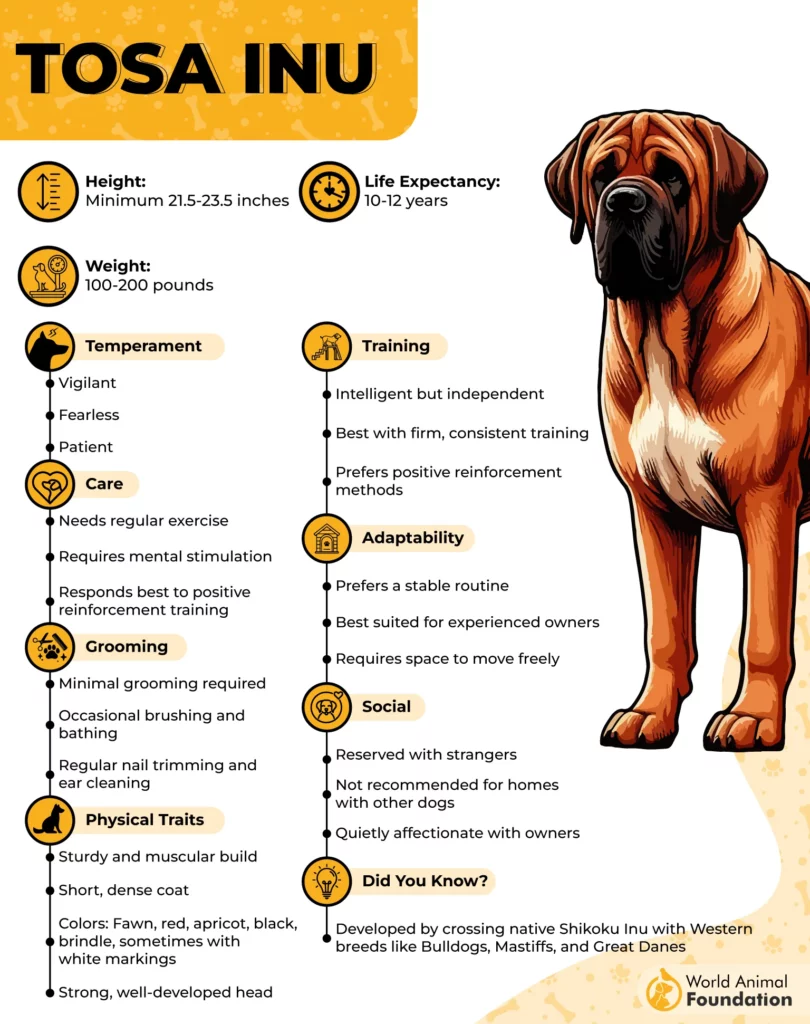
Reserved Temperament
These dogs are affectionate toward their family but show little interest in strangers or other animals. Managing their independence requires experience and consistency, along with structured routines. They respond well to firm leadership that channels their energy into constructive outlets.
Training and Stimulation Needs
While grooming demands are minimal, their training expectations are lifelong. They are intelligent dogs that require both physical and mental stimulation to stay balanced. A secure yard, daily handling, and close supervision in public are essential for maintaining control of such a powerful breed.
3. Gull Dong
The Gull Dong carries a large and intimidating build, giving it a presence that naturally deters intruders. This dog is known for its territorial instinct and quick reaction when strangers approach. Its confidence is matched by strength, making it a capable guardian for wide spaces.
Instincts and Background
The breed was initially bred in Pakistan from Gull Terriers and Bully Kuttas, creating a powerful hybrid suited for both guarding and working roles. While rare globally, it remains highly valued in South Asia, where its boldness is respected. Such a background shaped its instinct for strong territorial protection.
Demanding Yet Rewarding
A Gull Dong thrives with owners who set consistent boundaries and establish authority early. They need structured guidance, firm leadership, and steady training to manage their dominant streak. When given clarity and exercise, they grow into loyal companions who respect the family unit.
Environment and Socialization Needs
These dogs require space and daily activity, making them unsuitable for confined homes or apartments. Their intelligence allows them to pick up training quickly, but a reputable breeder will stress the importance of early socialization. When provided with strong guidance, they develop into steady protectors.
4. Central Asian Shepherd Dog
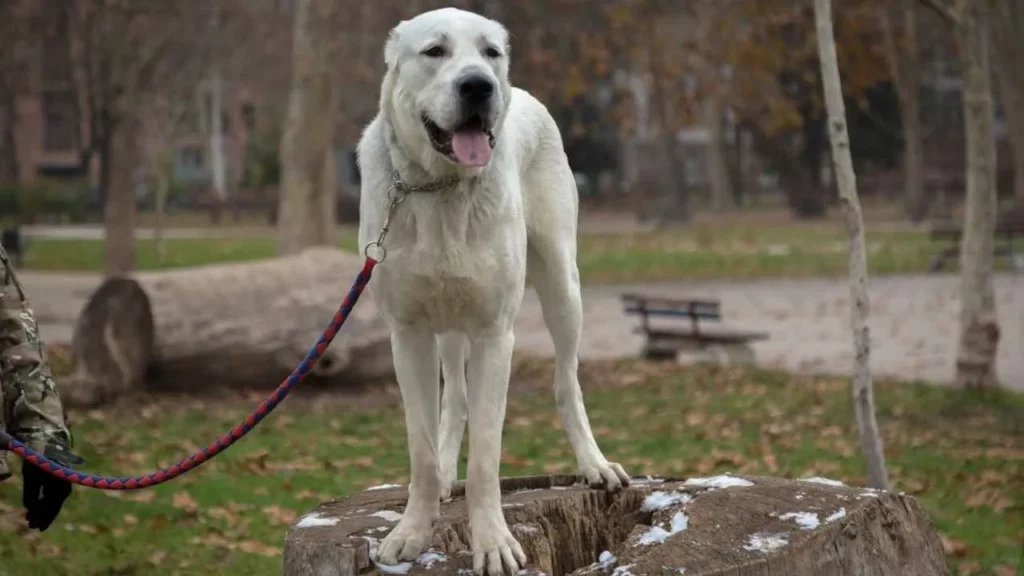
Bred through centuries of natural selection across Central Asia, this dog was relied upon to protect homes, flocks, and caravans in unforgiving terrain. Its muscular frame, thick coat, and endurance allowed it to confront predators ranging from wolves to larger threats like bears and lions.
Strength and Temperament
The breed standard highlights a temperament that is fearless, strong, and independent, shaped by generations of survival work. While capable of deep loyalty, their instinctive nature means they need a skilled hand to provide structure. Without proper guidance, their protective drive can be overwhelming.
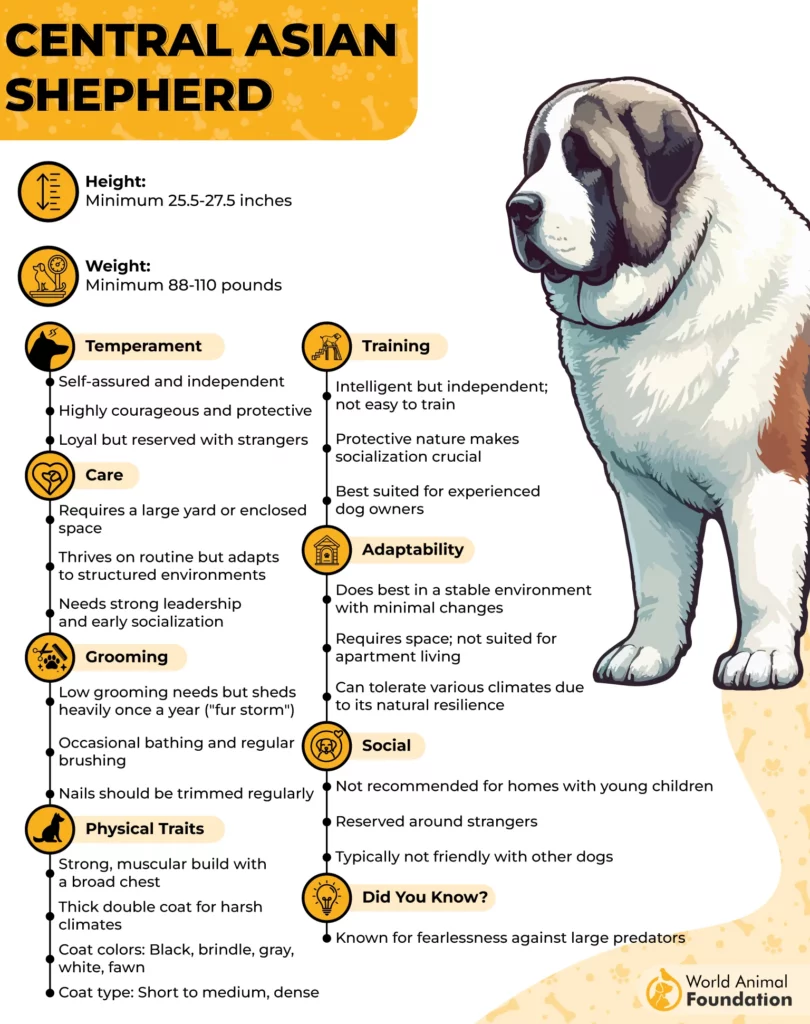
Daily Demands
Central Asian Shepherd Dogs are not a typical fit for apartments or sedentary homes, as mentioned in PetMD. They need space to move and tasks to engage both body and mind. For active families, they can offer unmatched security, provided training, and consistent oversight that begins early in life.
Relationship with Owners
Although deeply courageous, this breed can also be a loving companion when bonded to its household. Early socialization teaches them to accept friends, neighbors, and even smaller pets. With enough exposure, they balance watchful instincts with a calm presence in daily routines.
5. Czechoslovakian Wolfdog

Bred originally for border patrol, this breed developed an instinctive wariness of unfamiliar people. Without proper socialization, that caution can intensify, creating an overprotective edge. Their loyalty, however, runs deep for those within their trusted circle.
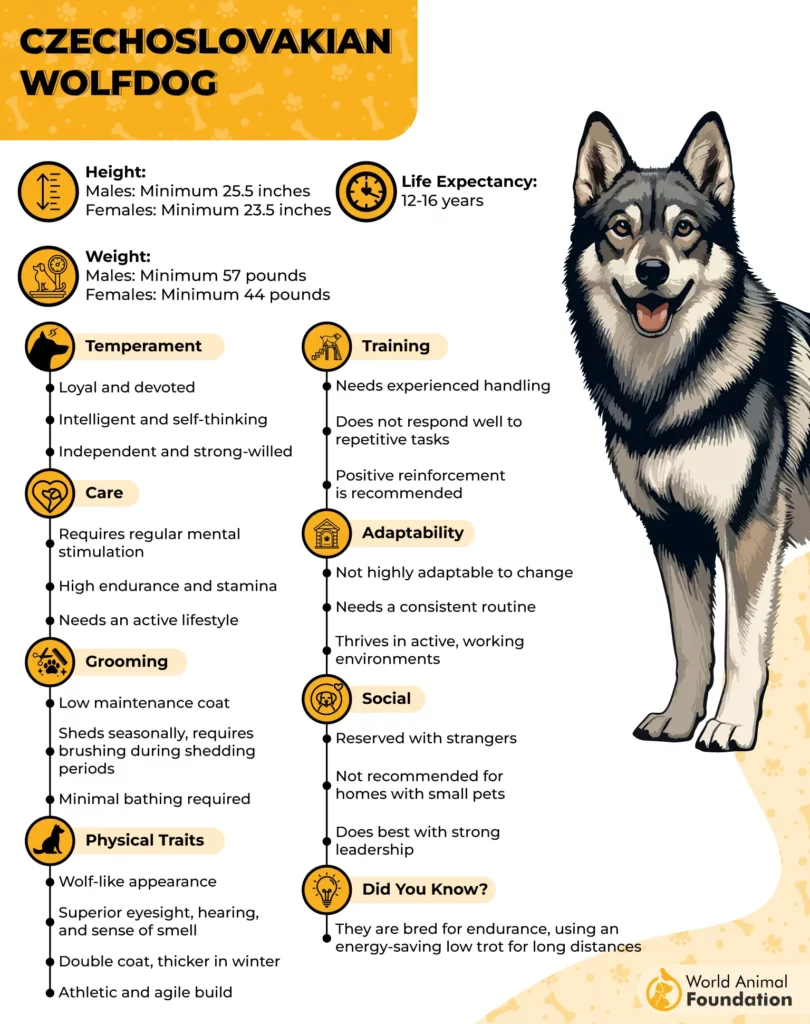
Physical Strength and Endurance
A muscular build allows the Czechoslovakian Wolfdog to move with speed and precision during patrol work. They have the stamina to cover wide areas without slowing down. This resilience suits families who live in open spaces and value dependable guardianship.
Behavior and Social Traits
Affection Level: Medium
Friendliness: Low
Kid-Friendly: Low
Pet-Friendly: Low
This combination shows why they need careful management, but also highlights their focused nature when paired with experienced handlers.
Demanding Exercise Needs
As one of the rare breeds used in demanding working roles, they require consistent activity to stay balanced. Their high energy can be channeled into structured tasks like tracking, obedience drills, or agility training. A bored wolfdog is more likely to become restless or defiant.
6. Thai Ridgeback
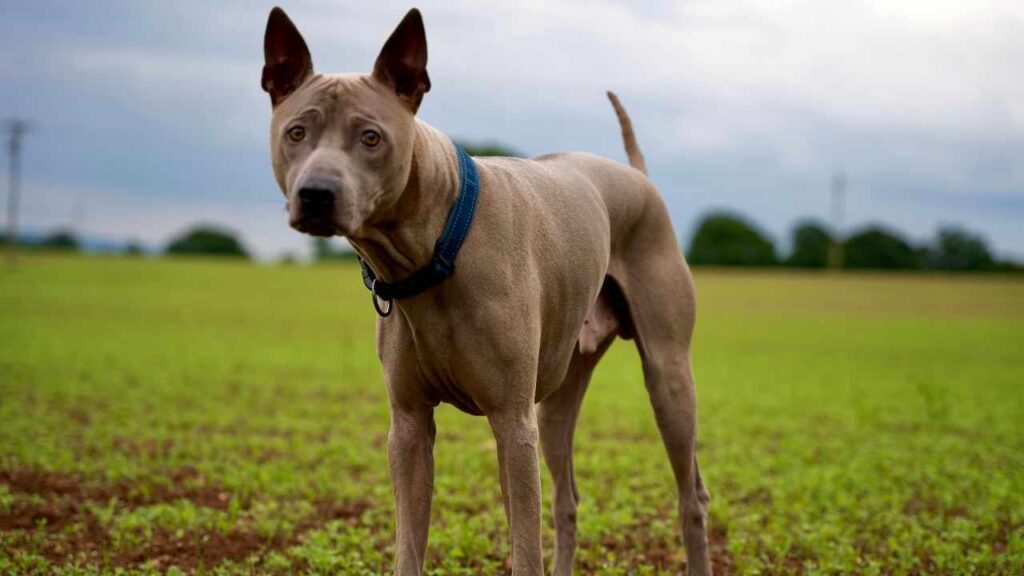
The Thai Ridgeback carries a strong, athletic build that gives it the confidence to handle demanding guarding roles. Its sharp instincts make it highly alert to movement around the home. This is a breed that responds swiftly when sensing changes in its surroundings.

Distinctive Ridge and Coat Patterns
One defining trait is the strip of fur running along the back in the opposite direction, forming up to eight unique ridge shapes. This feature makes the breed visually striking while also setting it apart from other muscular guardians. Despite sharing a ridge with the Rhodesian breed, the two are not related.
Intelligence and Adaptability
Known for problem-solving and independence, the Thai Ridgeback was originally bred for hunting, but today adapts to life as a family dog. To flourish, it needs:
Ample space for exercise
Consistent mental activity
Long walks that match its energy levels
Loyal Temperament at Home
When raised with attention and structure, the Thai Ridgeback proves itself a wonderful companion with a balance of affection and watchfulness. Its rich history as a versatile working dog still shows in the way it protects territory while remaining connected to its household.
7. Akbash

Did You Know: The name “Akbash” translates to “white head” in Turkish, reflecting the breed’s signature white coat that allowed it to blend in with sheep flocks.
The Akbash carries an imposing, muscular build that was shaped by centuries of work in rural Turkey. Farmers relied on their strength and instinct to keep flocks safe from wolves and other predators. That natural protective drive still defines the breed today.
Independent Working Style
Bred as a livestock guardian dog, the Akbash is used to making decisions without human direction. This independence makes it effective at spotting threats before they escalate. Owners, however, need to establish an early structure to guide such a strong-willed dog.
Adaptability in Modern Roles
Even though it is rare outside its homeland, the Akbash is valued in the United States and elsewhere by dedicated enthusiasts. It is loyal, calm, and watchful, though not ideal for first-time owners. With patience and experience, its protective instincts become a reliable asset.
Daily Needs and Engagement
While these dogs can seem relaxed around the house, they require steady engagement to stay balanced. Activities like agility work or structured jobs keep them mentally sharp and physically fit. This prevents the tendency to become sedentary, which is common with large guardians.
Conclusion
The rarest fierce dogs reflect centuries of purpose, from guarding remote villages to protecting farmland. Many of these remarkable guard dogs carry traits shaped by their country of origin, whether as a resilient herding dog, a steadfast flock protector, or a loyal household guardian.
Some display the strength of an ancient breed, while others show adaptability through canine sports and modern tasks. Their thick double coat, endurance, and protective nature make them both functional and noble.
Choosing such a breed requires respect for its heritage and commitment to responsible care, ensuring courage is matched with companionship.


